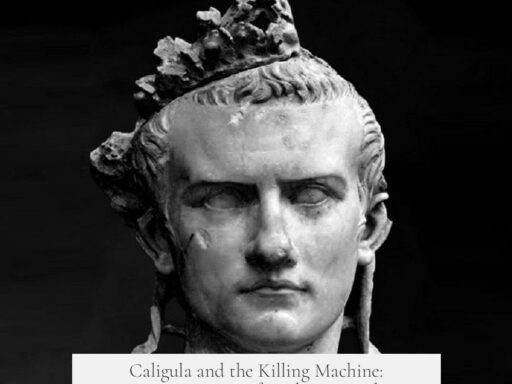Hannibal’s exact route crossing the Alps remains uncertain, though modern research increasingly supports the Col de la Traversette as the most plausible path.

Ancient sources such as Polybius and Livy provide narrative clues but no precise route. Polybius, who interviewed survivors, describes Hannibal reaching a summit with a view of the Italian peninsula. Livy states Italy became visible only during the descent. Both focused on key events rather than detailed geography, leaving gaps in exact trail identification.
Over the centuries, scholars and archaeologists have proposed several Alpine passes Hannibal might have used:

- Col du Mont Cenis: Favored by Napoleon, this route has little supporting evidence today despite its historical prominence.
- Col du Clapier: Known in antiquity as the Way of Hercules, this path received attention from researchers like Patrick Hunt. In 1959, John Hoyte led an expedition including an elephant to test its feasibility. Despite meeting criteria such as sufficient camping space and views of the Po Valley, the group found it too difficult for Hannibal’s army, leading to questions about its likelihood.
- Col de la Traversette: First proposed by Cecil Torr in 1924 and later championed by Gavin de Beer and Bill Mahaney, this route now commands the strongest archaeological and geological support. It matches Polybius’s description of a high, dangerous path. Evidence includes soil and vegetation suitable for Hannibal’s animals, dated around 218 BC. Additionally, microbiological traces linked to horse gut bacteria and parasites bolster the case.
The Col de la Traversette stands out for several reasons:
- Geological findings show a rockslide consistent with ancient accounts of Hannibal’s passage.
- The area has soil capable of sustaining livestock after the toughest segment.
- The timing of flood evidence aligns with recorded river crossings during Hannibal’s expedition.
- The route’s high elevation matches Polybius’s mention of “the highest paths.”
- It may have been chosen to avoid confrontations with hostile Gallic tribes on lower routes.
Despite these compelling findings, some uncertainties persist. Neither ancient historian provided direct evidence of the trail, and Polybius’s accuracy has been questioned. The Col du Traversette’s difficulty also raises questions about its practicality for a large army with elephants. However, the multitiered evidence from geology, biology, and archaeology increasingly narrows the debate.

The Col du Clapier remains part of popular imagination, partly due to the 1959 elephant expedition and associated media. Meanwhile, the Col du Mont Cenis, while historically favored by figures like Napoleon, lacks supporting evidence for Hannibal’s use.
In sum, the journey’s exact route remains an open question but current interdisciplinary research strongly favors the Col de la Traversette. This path fits ancient descriptions, archaeological data, and scientific findings, painting a convincing picture of Hannibal’s perilous crossing.

| Proposed Route | Key Evidence | Issues |
|---|---|---|
| Col du Mont Cenis | Historical endorsement (Napoleon) | Little archaeological or geological support |
| Col du Clapier | Historical route (Way of Hercules), 1959 elephant expedition | Too difficult; challenging terrain for large army |
| Col de la Traversette | Geological, chemical, and biological evidence; ancient text correlation | High difficulty; previously less considered |
Key takeaways:
- The exact route Hannibal took is uncertain due to vague ancient texts.
- The Col de la Traversette currently holds the strongest scientific and archaeological support.
- Geological evidence of rockslides and biological traces date to Hannibal’s era.
- Other passes, like Col du Clapier and Col du Mont Cenis, have historical interest but less credible support.
- Interdisciplinary research combining history, archaeology, and geology refines understanding of Hannibal’s passage.
What Do We Know About the Exact Route That Hannibal Took Crossing the Alps?

To answer the burning question: We don’t know the exact route Hannibal took over the Alps, but recent archaeological, geological, and historical research points us toward a strong frontrunner: the Col de la Traversette. Let’s dive into the fascinating detective story of how historians and scientists piece together Hannibal’s epic march, elephant-sized mysteries and all.
Hannibal Barca, that audacious Carthaginian general, pulled off one of history’s most legendary feats around 218 BC. His army—including war elephants—traipsed through the brutal Alpine mountain range to surprise the Romans on their home turf. But historians have puzzled over the exact mountain pass for centuries.

Piecing Together Clues From Ancient Texts
Our earliest sources come from two ancient heavyweights: Polybius and Livy. Polybius, known for his methodical approach, even claimed to have interviewed survivors from Hannibal’s army to gather firsthand accounts. According to him, Hannibal and his men saw the Italian peninsula from the summit. Livy paints a slightly different picture, saying Italy only came into view during the descent. So, right off the bat, even ancient reports differ.

Sadly, neither Polybius nor Livy provided an exact GPS-style route. They give dramatic snapshots of events—like battles and ambushes—but not a step-by-step path. It’s like getting a movie plot without a map. Their narratives set boundaries but leave historians guessing, trying to match text to topography.
The Three Proposed Routes: A Historical and Archaeological Journey
Over the years, scholars and adventurers have put forward three main Alpine passes as Hannibal’s secret highway: the Col du Mont Cenis, Col du Clapier, and Col de la Traversette. Each has its charms and challenges.
Col du Mont Cenis: Napoleon’s Favorite Guess
The Col du Mont Cenis route is the oldest contender. Napoleon himself favored this trail, no doubt because Hannibal was his historical idol. It’s a relatively straightforward and achievable alpine pass. But here’s the kicker: despite Napoleon’s fandom, hard evidence for Mont Cenis is surprisingly thin. Archaeologists haven’t found convincing signs that Hannibal’s army dragged elephants up this path. So while it makes a good soundtrack for a movie—especially with the upcoming one—it doesn’t hold the scholarly weight.
Col du Clapier: The Elephant’s Test Run
Next up is the Col du Clapier, nicknamed the Way of Hercules in ancient times. Patrick Hunt, leading the Stanford Alpine Archaeology Project, championed this route. In 1959, John Hoyte organized a bold field test by taking an elephant named Jumbo through the pass to see if it was physically possible.
This test was no stroll in the park. Scientists considered many factors—panoramic views of the Po Valley (as Polybius described), a tough enough descent to match historical records, altitude high enough for snow, and suitable pasture for horses after the hardest stretches. The route also linearly connected critical points mentioned in ancient sources, including the infamous “bare rock ambush.”
However, despite Jumbo’s impressive hiking skills, the expedition concluded that Col du Clapier was too difficult for a large convoy with animals and heavy equipment. Many participants then leaned back toward Mont Cenis for its relative ease. Yet, the massive undertaking anchored the Col du Clapier firmly in public imagination as a serious possibility.
Col de la Traversette: The Current Champion
And now, drumroll, please—the Col de la Traversette! The late Cecil Torr was the first to champion this path back in 1924, supported later by Gavin de Beer who linked ancient textual clues and flood timings that coincided with Hannibal’s river crossings.
But what really catapulted Traversette into the top spot was groundbreaking geological work. In 2004, Bill Mahaney and his team discovered that among Alpine passes, only the Traversette had evidence of a massive rock slide that could have blocked Hannibal’s path—something both Livy and Polybius mentioned as a key obstacle.
Mahaney’s team went further, exploring a unique bog in the area that offered soil rich enough to feed Hannibal’s livestock. Even more astonishing, carbon dating of the bog layers pegged significant activity there close to 218 BC.
Adding a pinch of microbiological intrigue, Chris Allen analyzed bacteria DNA fragments—specifically Clostridia, a kind found in horse guts—and also discovered bile acids and parasite eggs dating from the same era. This biological fingerprint suggests that large animals, like horses and elephants, passed through this spot roughly when Hannibal made his famous crossing.
Polybius mentioned that Hannibal took the “highest paths” possible, and Traversette sits higher than most other candidates. It’s a dangerous, steep route that fits Hannibal’s need to move quickly without getting trapped—which adds a strategic angle to Mahaney’s suspicion that Hannibal may have been forced onto this path to avoid Gauls blocking easier routes.
The Limitations: Why the Exact Route Still Eludes Us
Despite all these amazing findings, the mystery isn’t fully solved. Polybius and Livy provide great narratives but don’t pinpoint an exact GPS coordinate. Ancient reportage has its flaws. After all, travel notes passed down orally before being recorded thousands of years ago aren’t like your phone’s navigation app history.
Moreover, the Alpine terrain has changed over the centuries—landslides, erosion, human activity all muddy the trail. Even the most sophisticated soil and microbiological tests, while compelling, only provide circumstantial evidence.
So historians and archaeologists keep debating, arguing, and launching expeditions, guided by new tools like carbon dating and DNA analysis that Polybius would have envied. The route question is a tapestry woven from history, geology, biology, and a little bit of guesswork.
What Can We Learn From This Long-Running Alpine Mystery?
Beyond satisfying historical curiosity, studying Hannibal’s route teaches us about combining disciplines—archaeology, microbiology, and history—to solve puzzles with incomplete records. It shows how ancient journeys impact modern understanding of geography and strategy.
Plus, it reveals how storytelling and myth mingle with fact. The very ambiguity allows for human imagination, daring test-run elephants on perilous trails, and decades of debate. We get a little closer to knowing the man behind the legend and the challenges he faced.
Next time you see a mountain pass, consider the footprints of thousands—men, horses, and the majestic elephants—who once braved those heights to change history forever.
Summary Table: The Three Main Routes to Hannibal’s Crossing
| Route | Key Features | Evidence Strength | Notable Advocates |
|---|---|---|---|
| Col du Mont Cenis | Endorsed by Napoleon, easier pass | Weak archaeological support; historical admiration | Napoleon |
| Col du Clapier | Known as Way of Hercules, tested with real elephant | Mixed—physically challenging; prominent exploration | Patrick Hunt, John Hoyte |
| Col de la Traversette | High elevation, geological & microbiological evidence | Strongest current evidence; fits ancient descriptions | Cecil Torr, Gavin de Beer, Bill Mahaney, Chris Allen |
So, next time you walk a mountain trail, think of Hannibal and the debate still echoing through those Alpine ridges. Which path did he really take? For now, the Col de la Traversette seems the closest guess, but the Alps guard their secrets well.




